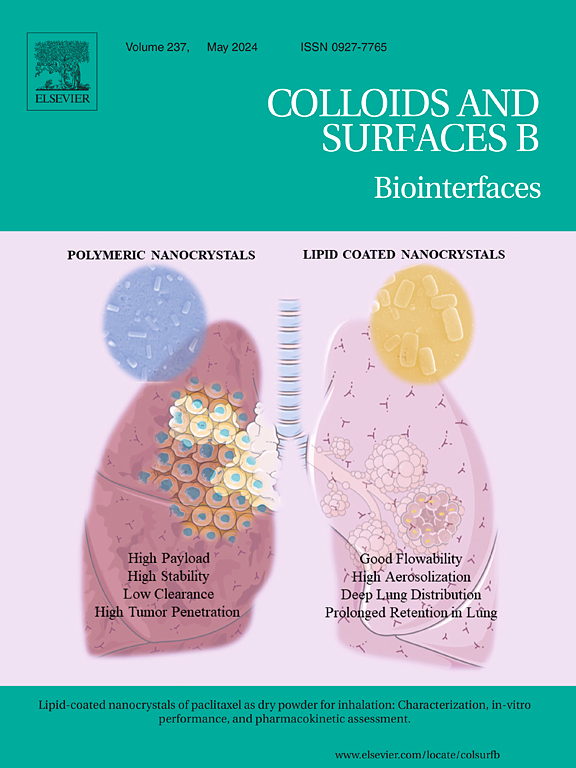Recent advances in biomimetic nanodelivery systems for the treatment of glioblastoma
IF 5.4
2区 医学
Q1 BIOPHYSICS
引用次数: 0
Abstract
Glioblastoma remain one of the deadliest malignant tumors in the central nervous system, largely due to their aggressiveness, high degree of heterogeneity, and the protective barrier of the blood-brain barrier (BBB). Conventional therapies including surgery, chemotherapy and radiotherapy often fail to improve patient prognosis due to limited drug penetration and non-specific toxicity. We then present recent advances in biomimetic nanodelivery systems, focusing on cell membrane coatings, nanoenzymes, and exosome-based carriers. By mimicking endogenous biological functions, these systems demonstrate improved immune evasion, enhanced BBB traversal, and selective drug release within the tumor microenvironment. Nevertheless, we acknowledge unresolved bottlenecks related to large-scale production, stability, and the intricacies of regulatory compliance. Looking forward, we propose an interdisciplinary roadmap that combines materials engineering, cellular biology, and clinical expertise. Through this collaborative approach, this work aims to optimize biomimetic nanodelivery for glioma therapy and ultimately improve patient outcomes.
治疗胶质母细胞瘤的仿生纳米递送系统的最新进展
胶质母细胞瘤仍然是中枢神经系统中最致命的恶性肿瘤之一,主要是由于其侵袭性、高度异质性和血脑屏障(BBB)的保护屏障。常规治疗包括手术、化疗和放疗,由于药物渗透有限和非特异性毒性,往往不能改善患者预后。然后,我们介绍了仿生纳米递送系统的最新进展,重点是细胞膜涂层、纳米酶和基于外泌体的载体。通过模拟内源性生物功能,这些系统表现出改善的免疫逃避、增强的血脑屏障穿越和肿瘤微环境中的选择性药物释放。然而,我们承认与大规模生产、稳定性和监管合规的复杂性有关的尚未解决的瓶颈。展望未来,我们提出了一个结合材料工程、细胞生物学和临床专业知识的跨学科路线图。通过这种合作方式,这项工作旨在优化神经胶质瘤治疗的仿生纳米递送,并最终改善患者的预后。
本文章由计算机程序翻译,如有差异,请以英文原文为准。
求助全文
约1分钟内获得全文
求助全文
来源期刊

Colloids and Surfaces B: Biointerfaces
生物-材料科学:生物材料
CiteScore
11.10
自引率
3.40%
发文量
730
审稿时长
42 days
期刊介绍:
Colloids and Surfaces B: Biointerfaces is an international journal devoted to fundamental and applied research on colloid and interfacial phenomena in relation to systems of biological origin, having particular relevance to the medical, pharmaceutical, biotechnological, food and cosmetic fields.
Submissions that: (1) deal solely with biological phenomena and do not describe the physico-chemical or colloid-chemical background and/or mechanism of the phenomena, and (2) deal solely with colloid/interfacial phenomena and do not have appropriate biological content or relevance, are outside the scope of the journal and will not be considered for publication.
The journal publishes regular research papers, reviews, short communications and invited perspective articles, called BioInterface Perspectives. The BioInterface Perspective provide researchers the opportunity to review their own work, as well as provide insight into the work of others that inspired and influenced the author. Regular articles should have a maximum total length of 6,000 words. In addition, a (combined) maximum of 8 normal-sized figures and/or tables is allowed (so for instance 3 tables and 5 figures). For multiple-panel figures each set of two panels equates to one figure. Short communications should not exceed half of the above. It is required to give on the article cover page a short statistical summary of the article listing the total number of words and tables/figures.
 求助内容:
求助内容: 应助结果提醒方式:
应助结果提醒方式:


